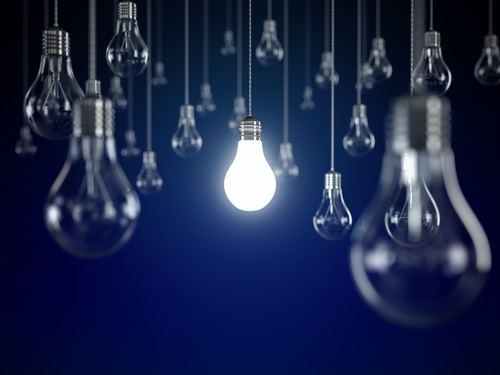For all those years when pretty much everybody was using the same kind of light bulbs in all fixtures, bulb wattage made sense as the standard metric. Your only decision when buying light bulbs was which brand to buy, based on longevity and color quality. Here is some advice from your trusted electrician.
Nowadays, we buy bulbs based on lumens, a measure of brightness. Yet bulb wattage is still very important. You still need to make sure that the bulb wattage is less than or equal to the maximum wattage for the fixture.
“Watt equivalency” appears on most CFL and LED light bulb packaging, but it’s not an exact science. As long as the bulb fits the fixture and isn’t too high-wattage, you are free to choose bulbs with the brightness, color, and energy efficiency that you prefer.

The Only Reason Why Bulb Wattage Matters
The issue with too-high wattage is because the lighting device can only handle a certain amount of power — but the electrical outlet can certainly supply all the power that the bulb wants!
Bulb wattage simply means the amount of power drawn by the bulb. When it exceeds the wattage rating of the lamp or other lighting appliance, the excess power burns the wiring, insulation, and housing around the bulb.
Usually the bulb just burns out, but it can be worse. Sparks can fly, and fires can start.
Modern light bulbs avoid this problem in most cases, because lighting appliances can handle much higher bulb wattage than your typical CFL or LED. However, be safe and don’t make assumptions — check the labeling on the appliance before replacing the bulb with a new type.
The Right Bulb Wattage for CFL and LED
When replacing an incandescent bulb (or finding a new CFL or LED that works better than your current one), check the watt rating on the fixture. A label has been required for many years. If you can’t find it, you might try contacting the manufacturer or asking an electrician to verify it.
At the store, start by looking at options for bulbs that match the traditional bulb wattage — but feel free to go a little higher or lower! Again, avoid exceeding the max rating and you’ll be okay.
Energy Star-rated light bulbs use these guidelines for replacing incandescent bulbs:
- 450 lumens to replace 40-watt bulbs
- 800 lumens to replace 60-watt bulbs
- 1,100 lumens to replace 75-watt bulbs
- 1,600 lumens to replace 100-watt bulbs
Different brands do not use the same lumens — e.g., one might say their 800-lumen light suits a 60-watt fixture, but another might recommend 900-lumens.
Since these CFL and LED bulbs are not particularly cheap, you might want to buy just one and try it in different locations of the home to see how you like it. Then you can buy bulk packages for the rest of the bulbs you need to save some money and get the right lumens for all locations.
More Tips for Choosing Light Bulbs
Once you know the right bulb wattage, you still have other choices to make:
- Start-up time: CFL bulbs take time to reach full brightness, so LED is better for places where you want bright light immediately, such as closet lights.
- Adding lights: If you feel like your new bulbs are not bright enough, consider adding more accent lights and overhead lights. Full coverage and task lighting in special locations makes life a lot easier on your eyes.
- Dimming: Early CFL bulbs could not be used with dimmer switches, but now there are great options for energy-efficient dimming bulbs.

